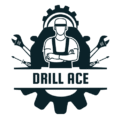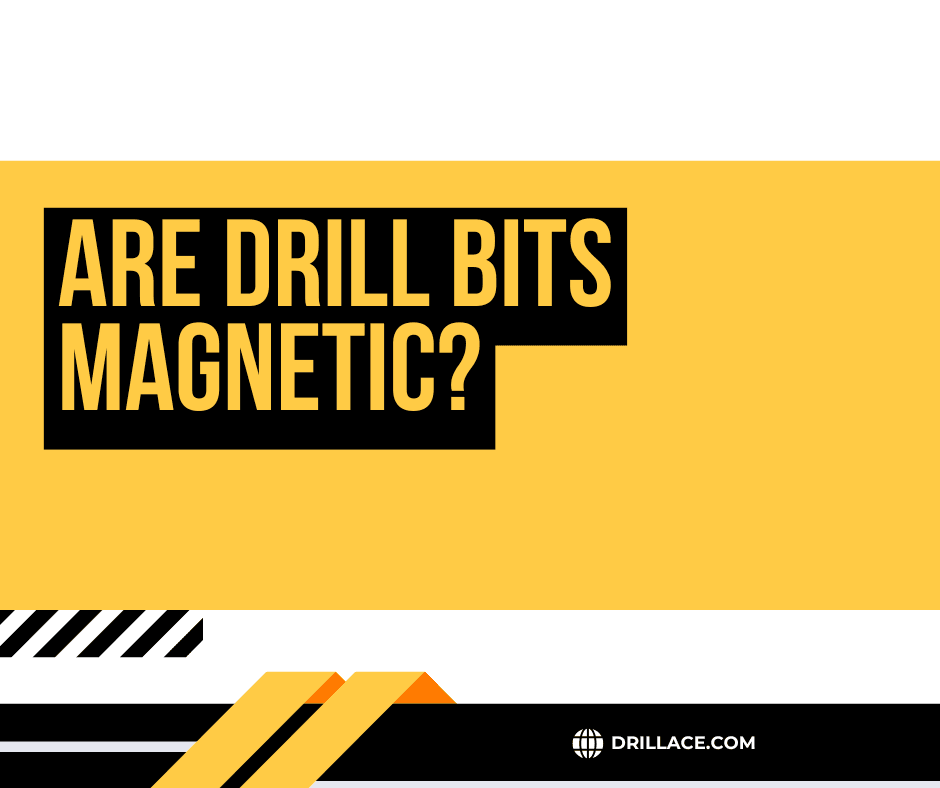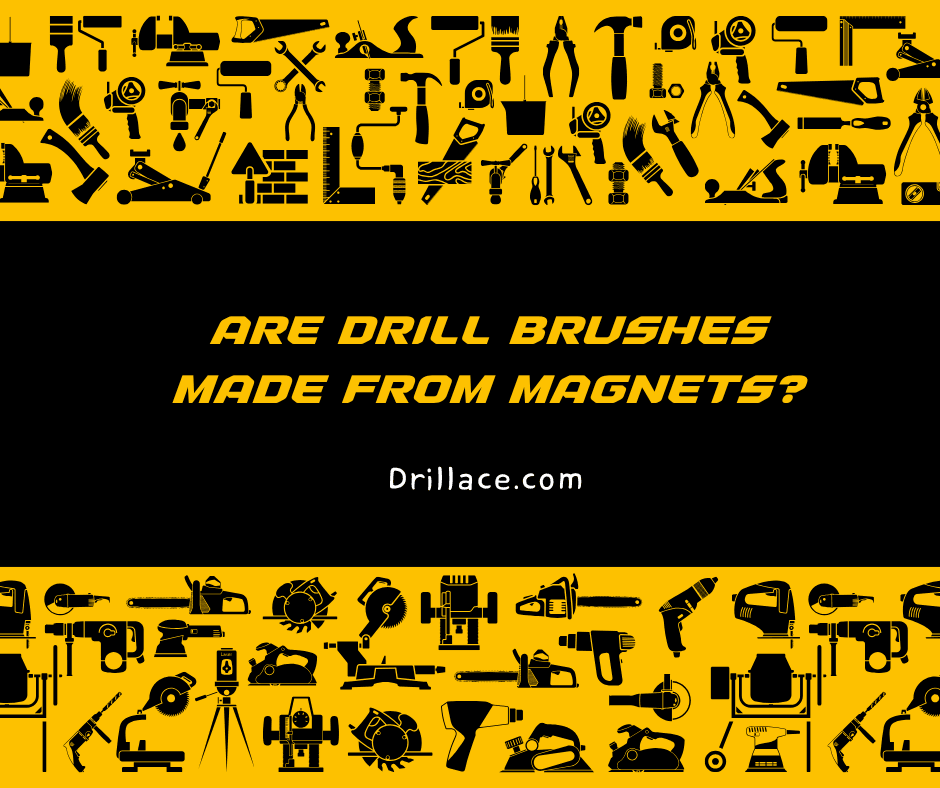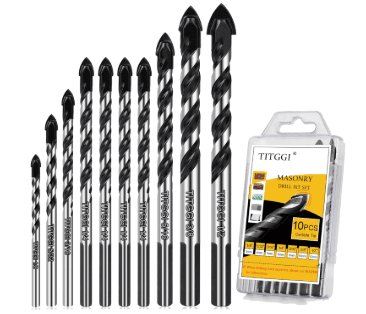The Best Drill Bit Sharpener: A Comprehensive Guide to Restoring Your Cutting Power
Drill bits are the unsung heroes of any workshop, whether you’re a seasoned professional or a dedicated DIY enthusiast. They make quick work of drilling holes in various materials, from wood and plastic to metal and masonry. However, just like any cutting tool, drill bits eventually become dull, leading to inefficient drilling, poor results, increased effort, and even potential safety hazards. This is where the best drill bit sharpener becomes an indispensable asset, transforming worn-out bits into precise cutting instruments and saving you significant time and money in the long run.
In this comprehensive guide, we’ll delve into everything you need to know about drill bit sharpeners, from understanding their importance and the different types available to key features to consider and popular models on the market. Our aim is to equip you with the knowledge to choose the perfect sharpener that meets your specific needs, ensuring your drill bits always perform at their peak.
Why Sharpen Your Drill Bits? The Undeniable Advantages
Before we explore the world of drill bit sharpeners, let’s understand why investing in one is a smart decision for any serious worker:
- Cost Savings: Drill bits, especially those designed for specialized materials or heavy-duty use, can be expensive. Constantly replacing dull bits quickly adds up. A quality drill bit sharpener allows you to restore your existing bits to like-new condition, significantly extending their lifespan and reducing your expenditure on new tools.
- Improved Performance: A sharp drill bit cuts efficiently and precisely, creating clean, accurate holes with minimal effort. Dull bits, on the other hand, struggle to penetrate, leading to splintered wood, rough edges, and inaccurate hole sizes. Sharpened bits ensure superior results and enhance overall productivity.
- Time Efficiency: With a sharpener readily available, you can quickly revive dull bits on-site or in your workshop. This eliminates downtime spent searching for replacements or waiting for professional sharpening services, keeping your projects moving smoothly.
- Enhanced Safety: Dull drill bits are prone to slipping, binding, or overheating, increasing the risk of accidents and injuries. A sharp bit cuts through material with less resistance, providing better control and a safer working environment.
- Versatility: Many modern drill bit sharpeners can accommodate a wide range of drill bit types and sizes, making them a versatile solution for various drilling needs. Some even offer the ability to sharpen other cutting tools like knives and chisels.
- Environmental Benefits: By extending the life of your drill bits, you reduce waste and contribute to more sustainable practices in your workshop.
Understanding Drill Bit Anatomy and Sharpening Angles
To effectively sharpen a drill bit, it’s helpful to understand its basic anatomy and the critical role of sharpening angles:
- Cutting Lips: These are the primary cutting edges that remove material. A drill bit typically has two cutting lips.
- Chisel Edge (Web): The blunt edge at the very tip of the drill bit, formed by the intersection of the flutes. A well-sharpened bit minimizes the size of this edge for better penetration.
- Flutes: The spiral grooves that allow chips and debris to escape the hole.
- Point Angle: The angle formed by the cutting lips at the tip of the drill bit. The most common point angles are 118 degrees (general purpose) and 135 degrees (for harder materials and self-centering). Some specialized bits may have different angles.
- Relief Angle (Clearance Angle): The angle behind the cutting lip that provides clearance for the bit to cut without rubbing. Proper relief is crucial for effective cutting and preventing overheating.
- Split Point: A common feature on many drill bits, where the chisel edge is ground down, creating two additional small cutting edges. This significantly improves self-centering and reduces walking when starting a hole, especially in metal.
The key to successful sharpening lies in replicating these angles accurately. While experienced users might attempt freehand sharpening with a bench grinder, a dedicated drill bit sharpener provides the jigs and guides necessary for consistent and precise results, even for beginners.
Types of Drill Bit Sharpeners: Choosing Your Weapon
Drill bit sharpeners come in various forms, each with its own advantages and ideal applications:
1. Manual Drill Bit Sharpeners
These sharpeners typically consist of a jig or guide that holds the drill bit at the correct angle while you manually grind it against an abrasive surface (often a diamond wheel or sharpening stone).
- Pros: Generally the most affordable option. Offer more control over the sharpening process for experienced users. Compact and portable.
- Cons: Require more skill and effort to achieve consistent results. Can be time-consuming, especially for multiple bits. Precision can vary depending on user technique.
- Best For: Occasional sharpening, hobbyists, and those on a tight budget who are willing to invest time in learning the technique. Some bench grinder attachments fall into this category.
2. Electric Drill Bit Sharpeners (Dedicated Units)
These are self-contained, motorized units designed specifically for sharpening drill bits. They feature a grinding wheel (often diamond-coated) and various chucks or guides to hold the drill bit securely at the correct angles.
- Pros: Offer faster and more consistent sharpening. User-friendly with less learning curve. Provide more precise and repeatable results. Many models can create or sharpen split points.
- Cons: Higher initial cost than manual options. Less portable than some manual jigs.
- Best For: Regular use, serious DIYers, and professionals who need consistent, high-quality sharpening and want to save time.
3. Drill Press Attachments / Jigs
Some sharpeners are designed to be used in conjunction with a drill press. These jigs hold the drill bit and guide it against a grinding wheel mounted in the drill press chuck.
- Pros: Can leverage existing workshop tools. Offer good stability and control.
- Cons: Requires a drill press. May not be as versatile as dedicated electric sharpeners.
- Best For: Users who already own a drill press and want a cost-effective sharpening solution with good precision.
Key Features to Consider When Buying the Best Drill Bit Sharpener
When evaluating different drill bit sharpeners, keep the following crucial features in mind to ensure you select the best fit for your needs:
- Drill Bit Size Range: Crucial for compatibility. Sharpeners are designed to accommodate specific diameter ranges (e.g., 3/32″ to 1/2″, or up to 3/4″). Ensure the sharpener can handle the sizes of the drill bits you use most frequently. Some models offer optional larger chucks for wider ranges.
- Drill Bit Material Compatibility: Different drill bits are made from various materials, including High-Speed Steel (HSS), Cobalt, Carbide, and TiN-coated bits. Most general-purpose sharpeners handle HSS and Cobalt well. Carbide bits, due to their hardness, often require specialized machines with diamond grinding wheels.
- Adjustable Sharpening Angles: While 118 and 135 degrees are standard, the ability to adjust the point angle offers greater versatility for different drilling applications and materials. This allows you to optimize your bits for specific tasks.
- Split Point Capability: The ability to create or resharpen a split point significantly improves drilling performance, especially in metal, by preventing “walking” and requiring less drilling pressure. This is a highly desirable feature.
- Ease of Operation: Look for a sharpener with clear instructions and a user-friendly design. A quick learning curve is a significant advantage, allowing you to start sharpening effectively in a short amount of time. Instructional videos from manufacturers can be very helpful.
- Grinding Wheel Type and Durability: Diamond grinding wheels are generally preferred for their durability and effectiveness across various drill bit materials, especially harder ones like carbide. Consider the expected lifespan of the wheel and the ease of replacement.
- Durability and Build Quality: A well-built sharpener with quality materials will last longer and provide more consistent results. Look for models with sturdy construction and positive user reviews regarding longevity.
- Portability: If you plan to use the sharpener in different locations, consider its size and weight. Some compact electric sharpeners are highly portable.
- Warranty and Customer Support: A good warranty provides peace of mind, and reliable customer support can be invaluable if you encounter any issues.
- Price and Value: Balance your budget with the features and performance you need. While higher-priced machines often offer greater precision and durability, there are excellent mid-range options for most users. Consider the long-term savings in drill bit replacements.
Top Contenders: Popular Drill Bit Sharpener Brands and Models
While personal preference and specific needs will always play a role, certain brands and models consistently receive high praise from users and experts alike. The Drill Doctor series is a dominant player in the electric drill bit sharpener market, known for its reliability and ease of use.
For Home Use & Serious DIYers:
- Drill Doctor DD350X/DD500X: These models are excellent entry points for home users. The DD350X is more basic, offering fixed 118-degree sharpening, while the DD500X provides adjustable 118 or 135-degree angles and often includes split point capability. They are generally compact, easy to use, and effectively sharpen HSS, masonry, carbide, and TiN-coated bits.
- General Tools 825 Drill Grinding Attachment: A popular and affordable manual attachment for use with a bench grinder. It’s a good option for those who already own a grinder and want a simple, cost-effective way to sharpen bits. It offers several fixed angles.
For Professionals & Demanding Users:
- Drill Doctor DD750X: Considered the flagship model for many, the DD750X offers the widest range of adjustable angles (115-140 degrees), accommodates larger drill bits (up to 3/4″), and excels at creating and sharpening split points. It’s designed for heavy use and provides exceptional precision.
- Tormek DBS-22 Drill Bit Sharpening Attachment: If you already own a Tormek water-cooled sharpening system, the DBS-22 attachment is a premium choice. It offers unparalleled precision and the ability to create four-facet points for optimal drilling performance, particularly for larger bits. This is a significant investment but delivers professional-grade results.
- Specialized Industrial Sharpeners: For high-volume professional settings or specialized tool sharpening needs (e.g., specific helical bits, very large diameters), industrial-grade sharpeners from manufacturers like Cuoghi Affilatrici offer advanced features, higher power, and greater automation.
Tips for Effective Drill Bit Sharpening
Once you’ve chosen your drill bit sharpener, here are some tips to get the best results:
- Read the Manual: Always start by thoroughly reading the manufacturer’s instructions. Each sharpener has its own nuances and operating procedures.
- Watch Instructional Videos: Many manufacturers provide video tutorials that can significantly reduce the learning curve and demonstrate proper technique.
- Practice on Old Bits: Before sharpening your valuable drill bits, practice on some old, worn-out bits that you don’t mind sacrificing. This allows you to get a feel for the machine and refine your technique.
- Clean Your Bits: Before sharpening, clean any debris or rust from your drill bits to ensure proper seating in the chuck and prevent contamination of the grinding wheel.
- Cool the Bit: If you’re sharpening manually or with a bench grinder, frequently dip the drill bit in water to prevent it from overheating. Overheating can ruin the temper of the steel, making the bit soft and prone to dulling quickly. Electric sharpeners often manage heat better, but it’s still good practice to be mindful.
- Check for Symmetry: After sharpening, visually inspect both cutting lips to ensure they are symmetrical and have the correct angles. An unbalanced bit will drill off-center and perform poorly.
- Test Your Sharpened Bit: Always test your newly sharpened bit on a scrap piece of material. This allows you to assess its cutting performance and make any necessary adjustments. A properly sharpened bit should cut easily and produce clean chips.
Maintaining Your Drill Bit Sharpener
To ensure the longevity and continued performance of your drill bit sharpener, regular maintenance is essential:
- Clean Regularly: Dust and metal shavings can accumulate inside the sharpener, potentially affecting its operation. Follow the manufacturer’s guidelines for cleaning.
- Inspect Grinding Wheel: Periodically check the grinding wheel for wear. Diamond wheels are durable but will eventually need replacement. Ensure you have a spare or know where to purchase replacements.
- Store Properly: Store your sharpener in a clean, dry environment, protected from dust and moisture.
FAQ: Best Drill Bit Sharpener
1. What types of drill bit sharpeners are available?
You can choose from electric bench-top units (like the Drill Doctor series), bench grinder attachments, or manual angle grinder jigs/file systems. Bench-top units are the easiest for precise sharpening.
2. Which drill bit sharpener gives the best results?
The Drill Doctor 750X ranks as “best overall” for its easy use, precision angles (115°–140°), and ability to sharpen bits up to ¾″ in high-speed steel, cobalt, carbide, and more.
3. Can I sharpen split-point drill bits?
Yes—some models like the 750X and DD500X support split-point tips (118°/135° angles) and can refresh or convert your bits accordingly.
4. How long do drill bits stay sharp after sharpening?
Sharpened bits often perform as well as new ones. In tests, the 750X even produced “better-than-new” finish for over 100 bits.
5. Is a drill bit sharpener worth it?
For casual users, disposable bits work fine—but for regular use, a sharpener saves money and improves performance, especially on large or specialty bits.
6. Can I sharpen drill bits manually?
Sure! Skilled users can sharpen bits with a bench grinder or angle grinder jig. It’s cost-effective but takes practice to maintain correct angles without overheating.
7. What’s the difference between DD350X, DD500X, and DD750X?
- DD350X: Entry-level, 118° only, 3/32″–½″ bits.
- DD500X: Mid-range, supports 135° split tips, 3/32″–½″ bits.
- DD750X: Top-tier, fully adjustable (115°–140°), up to ¾″ bits.
8. Can I sharpen small bits (< 3 mm) with these sharpeners?
Some models struggle with very tiny bits. The DD500X and DD750X handle down to 3/32″, but tiny gauge bits may need manual sharpening.
Conclusion
Investing in the best drill bit sharpener is a wise decision for anyone who regularly uses drills. It’s a tool that pays for itself many times over by extending the life of your drill bits, enhancing drilling performance, and ultimately saving you time and frustration. Whether you opt for a simple manual jig or a sophisticated electric unit, having a sharpener in your arsenal ensures that your drill bits are always ready to tackle any task with precision and efficiency.
By considering the type of drill bits you use, the frequency of sharpening, and the features that matter most to you, you can confidently choose the perfect drill bit sharpener to keep your projects running smoothly and your tools in top condition. So, say goodbye to dull bits and hello to renewed cutting power!
Related Articles from DrillAce
Explore top-performing drill drivers for every DIY and pro need. Best Drill Pumps Compared
Discover efficient water transfer tools powered by your drill. Best Magnetic Drill Press
Heavy-duty magnetic drills reviewed for steel fabrication tasks. Carbide Bits for Hardened Steel
Cut tough metal with precision using the best carbide drill bits. Are Drill Brushes Magnetic?
Uncover the materials and magnetic properties of drill brushes. Are Drill Bits Magnetic?
Learn whether drill bits can hold onto screws using magnetism.




